DIY Lemongrass Deodorant for Sensitive Skin
DIY deodorant allows you to control the ingredients, to ensure that you use only safe, non-toxic ingredients. It also saves you money.
DIY deodorant is safer to use than commercial deodorant. It is conspicuously missing many of the toxic ingredients found in commercial cosmetics like parabens, aluminum, triclosan, phthalates, and artificial fragrance. Plus not only does making your own deodorant allow you to control the ingredients, but it also saves you money.
DIY deodorant typically uses baking soda to shift the pH of your underarms and makes the area inhospitable to odour-causing bacteria. However, baking soda is abrasive and can cause painful rashes in those with sensitive skin. My recipe removes the baking soda, which encourages a healthy microbiome rather than destroying underarm bacterial colonies.
I tested this recipe in the heat of Jerusalem and the Dead Sea in September during a heatwave. It works. I did not have to reapply it during our long days walking through the Old City or hiking in Ein Gedi, in the desert by the Dead Sea. The deodorant worked even better than commercial products I’ve tried. The addition of tapioca or arrowroot starch removes the greasy feeling from the oil and beeswax mixture so that it goes on dry and doesn’t stain your clothing. If you need a little extra staying power try this frankincense deodorant recipe with a tiny amount of baking soda added.
You may notice when you first stop using a commercial deodorant that the underarm stink becomes worse. This is because it takes a few weeks for the colonies of bacteria in your armpits to balance. The stink comes from the bacteria on your skin. Using commercial products under your arms, not only disrupts your hormonal balance but also disrupts the colonies of good bacteria that keep the odour-causing bacteria in check. Washing with natural soap and water after exercise and especially sweaty times can significantly reduce the odour causing bacteria and encourage a balanced microbiome.
Once your body adjusts to using natural deodorants you will notice that underarm odour lessens, naturally, as your good microbiome comes into balance.
Lemongrass Deodorant for Sensitive Skin
Lemongrass is anti-inflammatory, antibacterial, and antifungal. It is soothing to sore muscles and is gentle for sensitive skin.
Yield: 4 ounces
Ingredients:
2 tablespoon shea butter
2 tablespoons coconut oil
2 teaspoons beeswax (8 grams)
4 teaspoons tapioca, potato, or arrowroot starch
50 drops of lemongrass essential oil
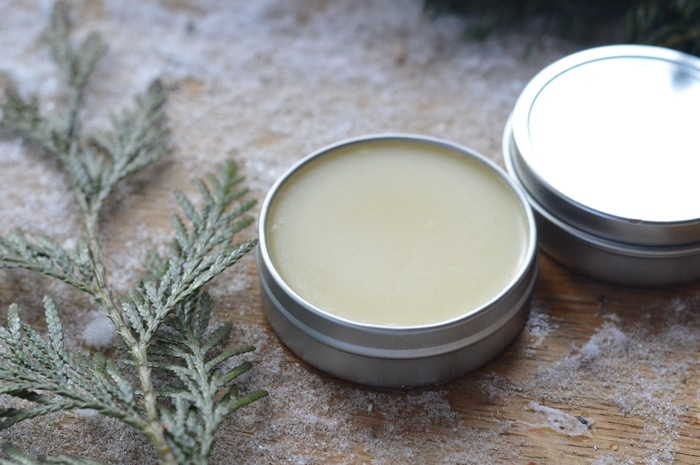
Directions:
Make a double boiler using a glass measuring cup. In the glass measuring cup put shea butter, coconut oil, and beeswax. Simmer over medium heat until the beeswax is fully melted.
Remove from the heat. Stir in the starch. Stir to fully incorporate into the mixture.
Once the mixture is unified, add lemongrass essential oil. Continue stirring until the mixture becomes opaque. Pour into 2 — 2-ounce tins. Label and date.
DIY deodorant should last 12 months if kept sealed in a cool and dry place, out of direct sunlight.
Variations:
Other essential oils that can be used in place of Lemongrass essential oil include lavender, frankincense, marjoram, tea tree, rose geranium. Avoid citrus essential oils as they can cause sunlight sensitivity in some individuals.
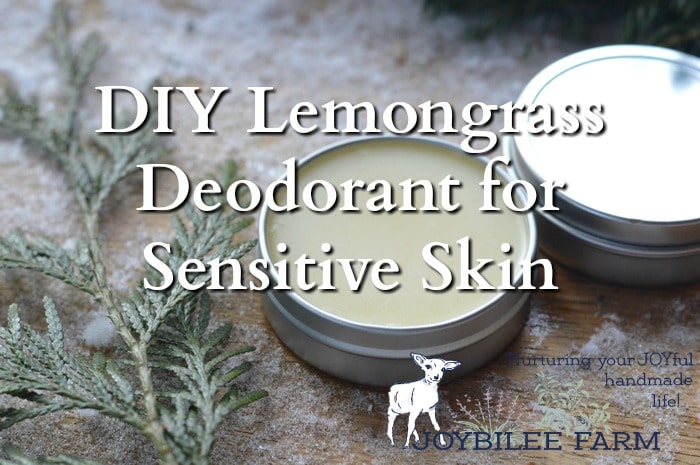
How do natural deodorants work?
Natural deodorants are not antiperspirants. They do not stop your body from sweating the way commercial antiperspirants do. Sweat is a natural detoxification and cooling function of the body. It is necessary for good health. Natural antiperspirants do not plug your pores with metal salts like aluminum.
Instead, natural deodorants work in three ways:
- By neutralizing the odour with baking soda or coffee
- By preventing bacteria build-up through the use of natural antimicrobial essential oils and herbs
- By drying or absorbing the sweat quickly as it comes out of your pores so that odour-causing bacteria doesn’t have a chance to proliferate.
This DIY deodorant recipe uses lemongrass essential oil for its antimicrobial and astringent qualities. Lemongrass also adds a fresh lemon scent, to this DIY deodorant to lift the spirit and emotions.
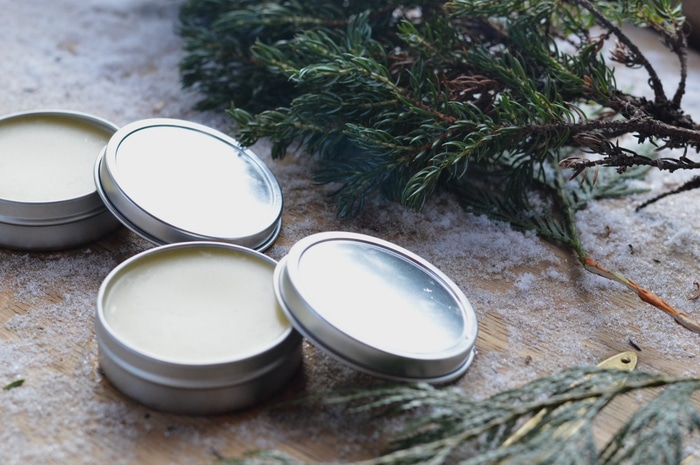
Substitutions:
If you don’t have lemongrass essential oil handy, other essential oils with similar antimicrobial qualities include tea tree essential oil, rose geranium essential oil, frankincense essential oil, lavender essential oil, and marjoram essential oil.
See my article on making oil substitutions in lotion bar recipes for more information about changing out the other oils and waxes in this recipe, to tweak it for your own tastes.
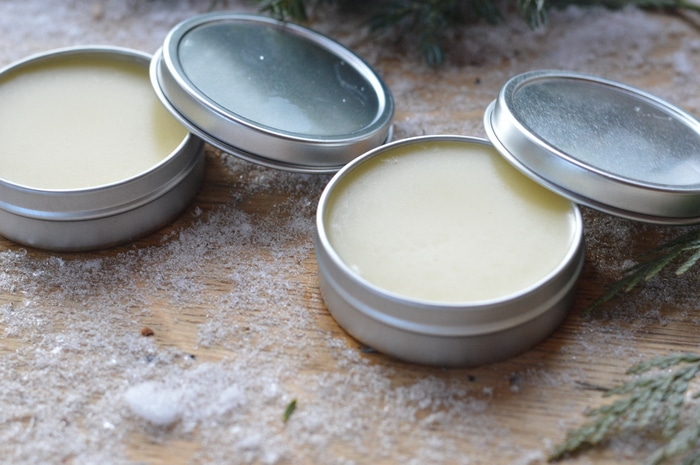



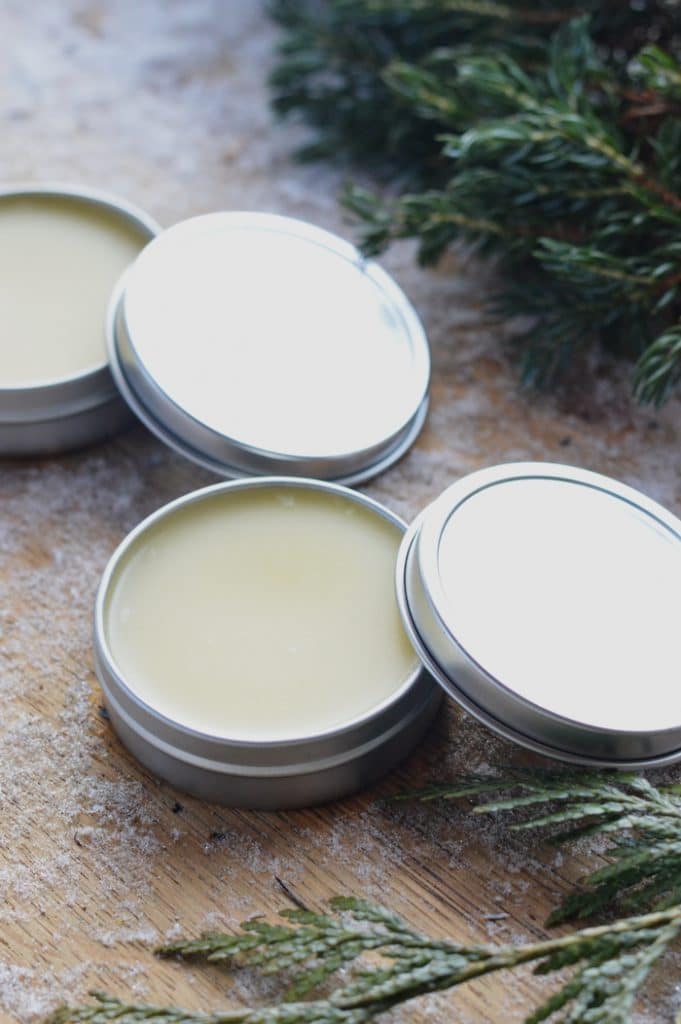

How would you suggest labeling this for suggested use?
I’d use deodorized shea butter since getting the raw shea butter can have unpredictable odors. I’ve had some that smelled pleasantly like mushrooms and others that smelled very bad.
Refined or unrefined shea butter?
i have a huge Lemongrass plant..any suggestions for using it instead of the essential oil??
You’d need to add some beeswax to make it more solid. How much depends entirely on your ambient temperatures.